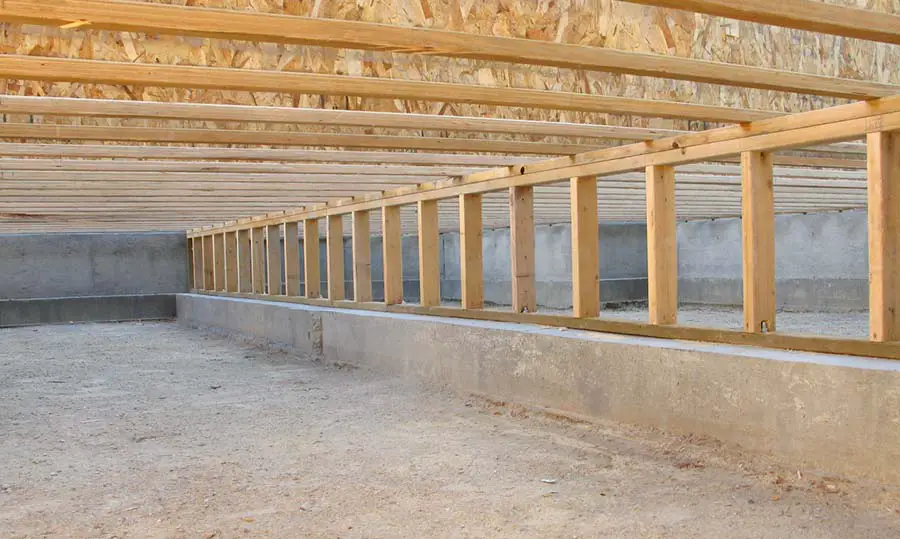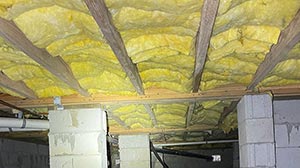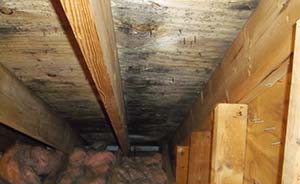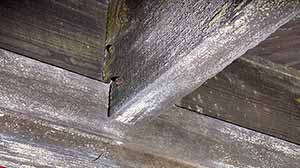
Some homes have a basement, and others a crawl space, either one’s function is to house the “guts” of a dwelling- such as the air-conditioning, the heater, ductwork, plumbing, insulation, and electrical wiring. If a crawl space is your way to access your home’s “guts,” keeping this area dry and free of moisture is very important, not only for yourself but also for protecting your home.
Tips for keeping a crawl space dry:
- Maintain proper humidity levels
- Inspect your crawl space
- Insulate your plumbing system
- Install vapor barrier
- Insulate your crawl space
- Cover any vents
- Install sump pump
- Position downspouts
- Regular maintenance
- Hire a professional
Keeping a crawl space dry, free from moisture and dampness, should be something every homeowner has on their to-do list. Unfortunately, this is not the case, and many crawl spaces are overrun by mold, small insects, rodents, and a general level of decay. This article will provide you with helpful hints on how to keep and maintain a dry crawl space.
10 Tips To Keep Your Crawl Space Dry
How do you keep this crucial part of your house dry? Let’s go through some helpful tips to do just that, and in applying some of these hints, ensure that your crawl space is a safe area that supports your house instead of bringing it down.
1. Maintain Proper Humidity Levels
When is air considered healthy? Experts agree that air is considered healthy when the humidity level is at +/- 55%. Monitoring and ensuring that the humidity is at this healthy level will prevent the following side effects of high humidity levels from happening:
- Mold & Mildew Growth
- Wood Rot
- Insulation Damage
You can use a digital thermo-hygrometer to measure the humidity level. If you find that it’s creeping up to 65% and higher, it’s time that you take preventative action. Using a dehumidifier will be your best defense against a higher-than-normal humidity level in your crawl space and help remove excess moisture from the air. Purchase a model that is energy efficient and that drains itself.
2. Inspect Your Crawl Space
It is an easy tip that you can do immediately. Please do a thorough inspection of your crawl space and look out for any cracks and holes. There should be no entry or exit points within the space for small animals (critters, mice, and rats), crawling insects, and general pests to get in or out.
These pests are generally destructive by nature and will:
- Tear Insulation
- Damage Wood
- Destroy Electrical Wires
Seal any cracks and holes using:
- Foam Insulation
- Caulking
- Wood
While down there, pay particular attention to any water dripping into the crawl space from your plumbing components and HVAC ducts.
3. Insulate Your Plumbing System
Insulating your plumbing system will help stop condensation from forming and spreading during cold weather. There are many different materials to choose from when you want to protect your pipes:
- Foam-And-Foil Insulation
- Flexible Foam (Rubber Backing Tape)
- Bubble-Film Wrap
- Foil-Backed Natural Cotton
Get insulation that is rated R-3, and make sure to clean the pipes and areas that you want to insulate first before applying. The insulation should fit snuggly on the pipes.
4. Install a Vapor Barrier

Prevention is better than cure, and it truly is directed at any unprotected crawl space. Most crawl spaces have exposed dirt floors, allowing ground moisture to seep into your home, ultimately increasing humidity levels all over.
Preventing moisture from entering your crawl and living space is done via a vapor barrier typically made from polyurethane sheeting.
The first thing that needs to happen is measuring the crawl space and cutting the sheet to the correct size. The measured sheet needs to be spread tight on the floor and over the walls while being taped down securely. Delegating this job to a local contractor could be your best option.
If you have a vapor barrier installed correctly, this capsuled-like installment can realistically reduce the moisture levels in your crawl space by 50% and keep it dry for years to come.
5. Insulate Your Crawl Space
When you have properly installed your vapor barrier, the next helpful hint is to follow up with the insulation of the crawl space. Insulate the crawl space using rigid panels of expanded polystyrene foam, and create a tight seal that keeps air out, all the while protecting it from moisture and mold.
Insulating your crawl space will enhance your home’s energy efficiency and promote proper air circulation throughout your home.
Contractors prefer using a product like ExTremeBloc crawl space wall insulation as it contains graphite, which increases its insular ability by 24% and has an R-11 insulation rating. When insulation is damaged or torn (think pesty little critters), it can negatively affect your home’s conditions, increasing the cost of energy when heat and cold air escapes through the floor.
6. Install Proper Vents
Vents are essential for proper crawl space ventilation, but if you install the wrong type of vents or improperly install them, they can cause many of the following problems:
- Water
- Outside Air
- Pests
Allowing the above elements into your space typically leads to problems like:
- Flooding
- Moisture
- Structural damage
Make sure to follow the directions that come with your crawl space vents to ensure they’re installed properly and won’t let rodents or debris under your home.
7. Install Sump Pump
You never know when mother nature is going to throw a flood your way. Having a sump pump installed (lowest section of the crawl space) will remove large amounts of water in the event of heavy downpours or burst pipes.
8. Position Downspouts
Another helpful hint is more proactive and easy to do. Check and correct your gutter and downspouts so that they face away from your home. Water will have to flow away from your house, not towards it.
9. Regular Maintenance
Again, the most important tip of the day, prevention is better than cure. Regular inspection of your crawl space and fixing any issues that you discover is the way to go. Try to clean your crawl space regularly, as the sooner you catch any signs of mold growth, the sooner you get to stop it in its moldy tracks.
10. Hire a Professional
There is no shame in hiring a professional contractor to assist with any of these helpful hints. They do it for a living, and getting it right the first time is a huge deal, so it’s usually well worth the time and money. They could also point out which areas to check when performing regular checks in the future.
Why Is It Important To Keep A Crawl Space Dry?
Your home’s crawl space is your access point to the organs of your house. It is what you will have to navigate when doing maintenance or when you need to fix your home’s air-conditioning, plumbing, or electrical wiring.
A wet crawl space can lead to many outcomes, none good, structural damage being the most dangerous. Not keeping your crawl space dry and ventilated will lead to you having to part with lots of cash to rectify.
What Occurs When Your Crawl Space Is Wet and Humid?
Not keeping the space beneath your house dry could lead to any of the following happenings, and prevention, in this case, is way better than the cure:
- Mold
- Fungi
- Spores
- Termites
- Rot
- Rodents
- Snakes
- Stack Effect
- Structural Damage
Conclusion
By following these helpful hints, you will hopefully keep your crawl space dry and in a healthy state from now on. Leaving your space in a wet, damp, and humid state will only cause you to have nightmares in the future.
Work your way through them and rope in some help with those you may struggle with if required. The main aim of the hints is to help you and give you peace of mind that when you crawl into your crawling space, you are the only one doing the crawling!







